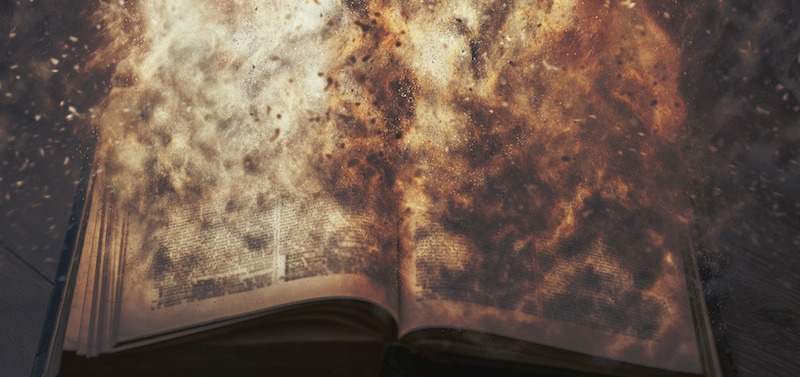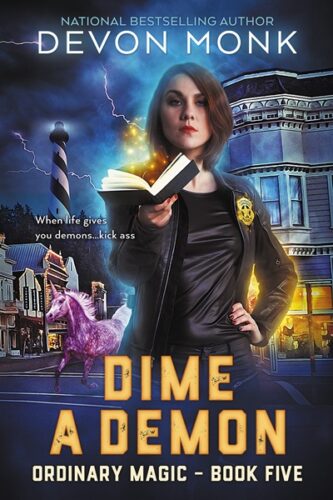Reading 7 books - you need this tool
Feb. 21st, 2021 01:13 am
https://www.reddit.com/r/Antiques/comments/gpo3sa/300_year_old_library_tool_that_enabled_a/
A 300-year-old library tool that enabled a researcher to have seven books open at once
(Mexico City Library)

The Little-Known ‘Slow Fire’ That’s Destroying All Our Books
Chloe Vassot on the Relentless, Inevitable Process of Decay
How to fix a book: first, gather your tools. The bone folder that feels familiar in your hand, the knitting needles still sticky with glue, the X-Acto knife, the tiny Tupperware of glue.
Then, diagnose the damage. If there’s scotch tape, grab the lighter fluid. If the book is on its last leg, worn out, prepare to make a box. Check that the guillotine is free.
Sometimes you need to be brutal, eschewing sentimentality as you cut off a spine or replace a book’s old, water-stained cover. At other times, gentle, delicate—especially with the books from Special Collections, those unique, fragile (and expensive) texts. And sometimes you find books with yellowed, stiff pages. The old dog-eared folds break off in triangles, flutter to the floor. These books can’t be helped by simple repairs—they’re acidified, dying, and the opposite of unique. In fact, they’re examples of a large-scale catastrophe that’s been quietly building in libraries for decades.
It’s called a “slow fire,” this continuous acidification and subsequent embrittlement of paper that was created with the seeds of its own ruin in its very fibers. In a 1987 documentary on the subject, the deputy Librarian of Congress William Welsh takes an embrittled, acid-burned book and begins tearing pages out by the handful, crumbling them into shards with an ease reminiscent of stepping on a dried-up insect carcass.
VIDEO FROM LIT HUB:
Helen Macdonald and James Rebanks talk to Andy Fryers at the Hay Festival Winter Weekend
The destruction is inevitable. Depending on how a book was made and how it’s been stored, embrittlement can happen in as little as 30 to 100 years. Already, books have been lost, and the methods of preservation are too limited, time-consuming, and expensive to address the scale of the problem. Mass deacidification, where an alkaline neutralizing agent is introduced via a spray or solution applied to paper, once seemed like the golden solution; but while it can be used to prevent slightly acidified paper from deteriorating, it doesn’t reverse the effects of prior damage. The fallback is digitization—a fancy way to say mass-scanning, and the most used method of saving the content of a text, but not the book itself. In an article about the Library of Congress’ digitization efforts, Kyle Chayka reports that it would take literally decades of scanning to preserve the institution’s over 160 million object collection. At our existing technology’s current scanning pace, preserving the prints and photographs division alone would take about 300 years.
As Ed Vermue, my boss at the tiny college preservation lab where I worked, put it: we cannot stop the slow destruction of our collections. From the mid-19th century until now, we’ve never had more paper, more print materials floating around our world. And there’s about to be a physical hole in the historical record that coincides precisely with the largest creation of printed materials in human history.
The answer to how we got here also has to do with scale—specifically, the increased demand for paper and printed materials that swept the world as printing presses became common and literacy rates rose. In western Europe, from the 16th to mid-19th centuries, paper manufacturing was inherently a recycling industry. Old rags, dead peoples’ bedsheets, even canvas sails—all were collected, sorted, pulped, and turned into the material backbone for paper-making.
Paper demands fiber, and recycling was cheaper and faster than relying on the raw plant materials like flax and hemp to be grown, harvested, and readied for use. But as demand grew, papermakers started eyeing another kind of plant: trees, in all their abundance.
It wasn’t until the 1850s that someone figured out the code: an industrially intense process of pulverization and harsh chemicals that killed the fish in the streams that powered paper mills and, crucially, created highly acidic, weak paper. Think of newsprint, how quickly it disintegrates. For decades, and continuing into the 1970s, the material used to record both the mundane and profound thoughts of generations was just a few grades stronger than that notoriously short-lived medium.
Part of the reason wood-pulp paper is so weak is due to the comparably short strands of its fibers; it creates pages prone to break, and all the acids the paper retains from its production process creates pages that are already always burning up from the inside.
Librarians everywhere are now forced to choose: in the face of inevitable loss, what gets saved?
In the repair lab, one of my favorite fixes was called a hinge. Using beautiful, soft Japanese papers that we cut using just a brushstroke of distilled water, we reattached torn out pages to their text block, reinforcing them with paper that was alkaline and a glue called wheat-paste that was dissolvable, just in case. We called the thinnest versions “ghost paper”—it turned almost entirely translucent when attached to a page, every strand of fiber visible on its fuzzy edges.
*
In our collective imagination, libraries seem to hold a comforting promise of forever. We like to believe that a book, once written and published and entrusted to these institutions, will stand the test of time, sturdy and reliable. But this is a fallacy. Libraries aren’t hermetically sealed vaults, but living entities, constantly moving and constantly dealing with the natural ebbs and flows in their circulating and more permanent collections. Some books will always be lost, whether to puddles or bad memories, but some will be lost to a creeping disaster that we should have started fighting years ago. Librarians everywhere are now forced to choose: in the face of inevitable loss, what gets saved?
The books and documents that history has deemed valuable, the ones made hundreds of years ago and kept in temperature-controlled vaults, will survive. Partly because of their importance, and partly because so many of them were made in the time before wood-pulp; many 500-year-old books are stronger and in better condition than texts created just a few decades ago.
With cheaply available paper, we lost quality but gained quantity, and it changed the world. The world of literacy spread beyond the elites, enabling new cultures based on the written word. It was a step that shifted written words away from the sole purview of white men, and humanity is better for it. As we choose what physical objects to preserve and what to copy, it’s worth asking whose stories are given precedence; what mundane, daily records of life are we sacrificing, and how do we best protect what we have before it’s gone?
As much as I’d like to believe the repairs I made and books I fixed will last, I know they’ll never survive long enough to satisfy me. But the fire in the library has been burning for a long time—it still matters that we fix what we can.
Coronavirus and books
May. 14th, 2020 10:13 amDisinfecting Returned Books
In light of the novel coronavirus pandemic, librarians should take precautions when handling library books and other materials returned from patrons. In this SLJ article, the Centers for Disease Control (CDC) and Institute for Museum and Library Services (IMLS) provide the following information.
A study, published in March 2020 in the New England Journal of Medicine, showed that the virus "remained active on plastic and stainless steel surfaces for two to three days under the conditions in this experiment. It remained infectious for up to 24 hours on cardboard."
According to CDC epidemiologists, librarians do not need to worry about disinfecting paper-based items such as books. The virus, if present, would be in very low quantities and die off rather quickly. However, librarians know that patrons sneeze and cough directly onto and into books, so the CDC recommends leaving returned books untouched for a minimum of 24 hours. While disinfecting wipes can damage paper and cardboard, many book covers are coated with plastic and are wipeable with alcohol wipes.
Since the majority of books in FWISD school libraries have plastic coating on their covers or mylar book jackets, Library Media Services recommends that all returned library books be "quarantined" and left untouched for a minimum of three days.
Librarians should utilize their book returns or designate a book truck, table, or container for the collection of returned library books.
Library staff should not handle books to check them in prior to the quarantine period. If the library is set up in such a way that patrons can scan their own book before placing in the designated return location, this is allowable.
After the recommended length of time has passed, library staff may check in and shelve returned library books.
Library staff and volunteers should practice good hygiene after handling books and materials.
In light of the novel coronavirus pandemic, librarians should take precautions when handling library books and other materials returned from patrons. In this SLJ article, the Centers for Disease Control (CDC) and Institute for Museum and Library Services (IMLS) provide the following information.
A study, published in March 2020 in the New England Journal of Medicine, showed that the virus "remained active on plastic and stainless steel surfaces for two to three days under the conditions in this experiment. It remained infectious for up to 24 hours on cardboard."
According to CDC epidemiologists, librarians do not need to worry about disinfecting paper-based items such as books. The virus, if present, would be in very low quantities and die off rather quickly. However, librarians know that patrons sneeze and cough directly onto and into books, so the CDC recommends leaving returned books untouched for a minimum of 24 hours. While disinfecting wipes can damage paper and cardboard, many book covers are coated with plastic and are wipeable with alcohol wipes.
Since the majority of books in FWISD school libraries have plastic coating on their covers or mylar book jackets, Library Media Services recommends that all returned library books be "quarantined" and left untouched for a minimum of three days.
Librarians should utilize their book returns or designate a book truck, table, or container for the collection of returned library books.
Library staff should not handle books to check them in prior to the quarantine period. If the library is set up in such a way that patrons can scan their own book before placing in the designated return location, this is allowable.
After the recommended length of time has passed, library staff may check in and shelve returned library books.
Library staff and volunteers should practice good hygiene after handling books and materials.
These dovetail so nicely into one prompt but the first is so evocative. I could smell the scent of books, especially old ones.


http://www.dictionary.com/slideshows/quotes-about-libraries#sloan


http://www.dictionary.com/slideshows/quotes-about-libraries#sloan
Accused of having an incorrect visa, Mem Fox detained by immigration officials at LA airport
DEBORAH BOGLE, Books Editor, The Advertiser
February 22, 2017 9:33pm
http://www.dailytelegraph.com.au/news/accused-of-having-an-incorrect-visa-mem-fox-detained-by-immigration-officials-at-la-airport/news-story/aa712d3867d1509c52c3608798e19db5
AUSTRALIA’S best-loved children’s author, Mem Fox, was left sobbing and shaken after being detained for two hours and aggressively interrogated by immigration officials at Los Angeles airport.
Fox says she’s unlikely to ever travel to the United States again after being made to feel like “a prisoner at Guantanamo Bay”.
President Donald Trump had created the climate for this sort of behaviour, she said, adding: “This is what happens when extremists take power.”

Mem Fox. Picture: Matt Turner
En route to Milwaukee for a conference on February 9, where she was to deliver the opening keynote address at a literacy conference, Fox was ushered into an airport holding room and told she was travelling on the wrong visa. This was incorrect and the US Embassy in Canberra has since apologised. Fox, 70, said that by the time she checked in to her hotel she was shaking and sobbing.
“I am old and white, innocent and educated, and I speak English fluently,” she said. “Imagine what happened to the others in the room, including an old Iranian woman in her 80s, in a wheelchair.
“The way I was treated would have made any decent American shocked to the core, because that’s not America as a whole, it really isn’t. It’s just that people have been given permission to let rip in a fashion that is alarming.”
The irony that the two most popular of her more than 25 books published in the US, Ten Little Fingers and Ten Little Toes and Whoever You Are, are both about diversity, was not lost on her. Nor was the fact that the theme of the conference she was attending was inclusivity and diversity.
Fox has visited the US more than 100 times since 1985, and is widely known there as an author and literacy educator.
After returning to Adelaide, she made a complaint to the US Embassy in Canberra, and received an emailed apology. An embassy spokeswoman told The Advertiser consular cases were not discussed with the media for privacy reasons.
Her experience has confirmed in Fox the importance of her new book, I’m Australian Too, about multiculturalism, illustrated by an Indian-born Australian, Ronojoy Ghosh. Fox wrote the book in late 2014 in response to what she saw as a rising tide of antagonism towards immigrants and refugees. “And it’s got worse since then,” she said. “I just feel that the hate speech that is going on is trying to change that aspect of our national character and it would be heartbreaking if that happened.”
Originally published as Mem detained in Trump’s America
DEBORAH BOGLE, Books Editor, The Advertiser
February 22, 2017 9:33pm
http://www.dailytelegraph.com.au/news/accused-of-having-an-incorrect-visa-mem-fox-detained-by-immigration-officials-at-la-airport/news-story/aa712d3867d1509c52c3608798e19db5
AUSTRALIA’S best-loved children’s author, Mem Fox, was left sobbing and shaken after being detained for two hours and aggressively interrogated by immigration officials at Los Angeles airport.
Fox says she’s unlikely to ever travel to the United States again after being made to feel like “a prisoner at Guantanamo Bay”.
President Donald Trump had created the climate for this sort of behaviour, she said, adding: “This is what happens when extremists take power.”

Mem Fox. Picture: Matt Turner
En route to Milwaukee for a conference on February 9, where she was to deliver the opening keynote address at a literacy conference, Fox was ushered into an airport holding room and told she was travelling on the wrong visa. This was incorrect and the US Embassy in Canberra has since apologised. Fox, 70, said that by the time she checked in to her hotel she was shaking and sobbing.
“I am old and white, innocent and educated, and I speak English fluently,” she said. “Imagine what happened to the others in the room, including an old Iranian woman in her 80s, in a wheelchair.
“The way I was treated would have made any decent American shocked to the core, because that’s not America as a whole, it really isn’t. It’s just that people have been given permission to let rip in a fashion that is alarming.”
The irony that the two most popular of her more than 25 books published in the US, Ten Little Fingers and Ten Little Toes and Whoever You Are, are both about diversity, was not lost on her. Nor was the fact that the theme of the conference she was attending was inclusivity and diversity.
Fox has visited the US more than 100 times since 1985, and is widely known there as an author and literacy educator.
After returning to Adelaide, she made a complaint to the US Embassy in Canberra, and received an emailed apology. An embassy spokeswoman told The Advertiser consular cases were not discussed with the media for privacy reasons.
Her experience has confirmed in Fox the importance of her new book, I’m Australian Too, about multiculturalism, illustrated by an Indian-born Australian, Ronojoy Ghosh. Fox wrote the book in late 2014 in response to what she saw as a rising tide of antagonism towards immigrants and refugees. “And it’s got worse since then,” she said. “I just feel that the hate speech that is going on is trying to change that aspect of our national character and it would be heartbreaking if that happened.”
Originally published as Mem detained in Trump’s America























